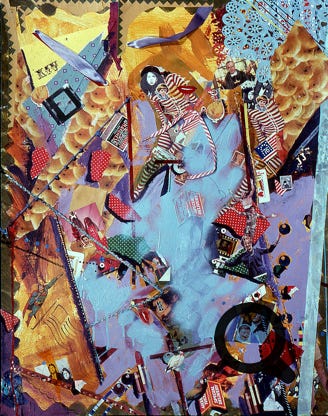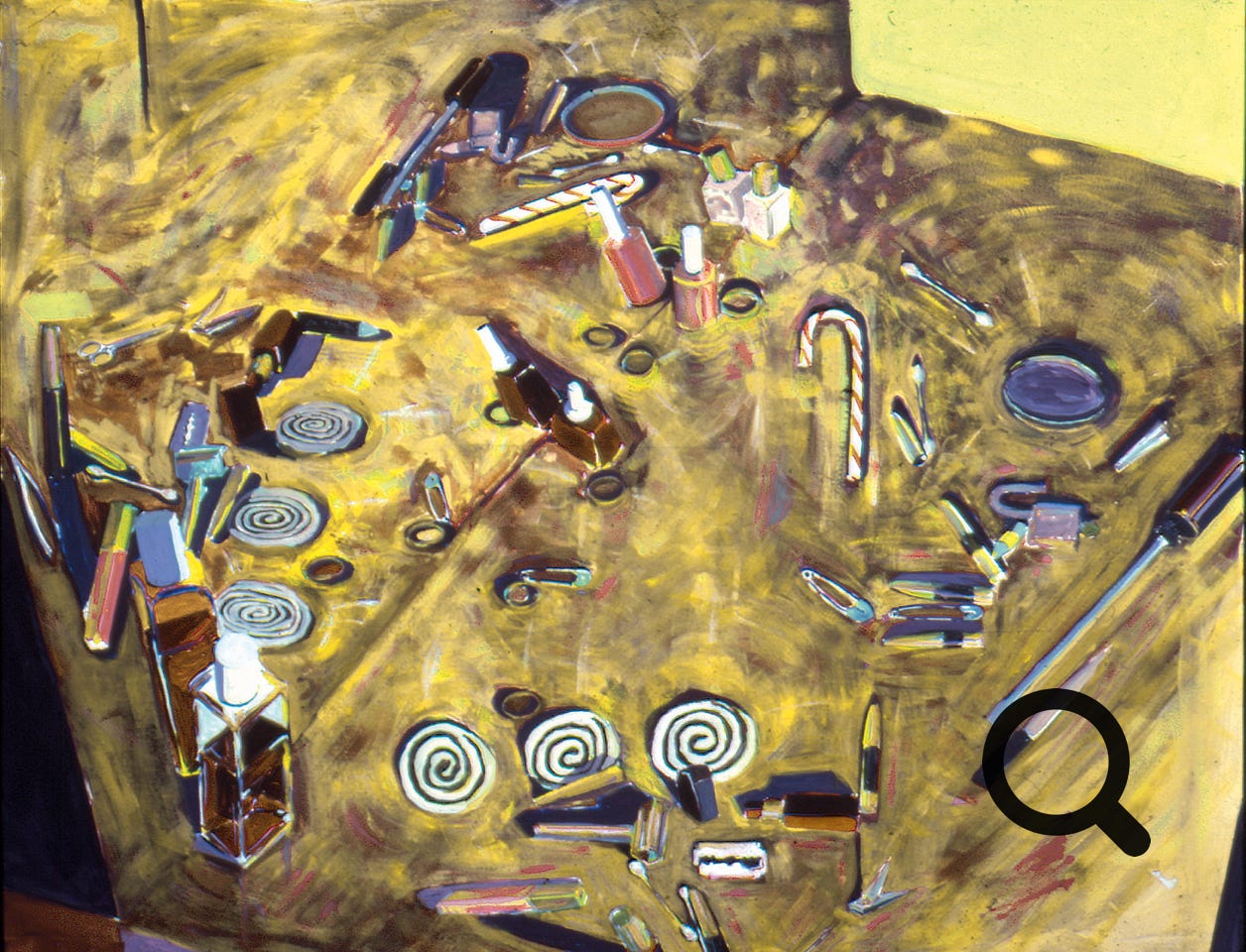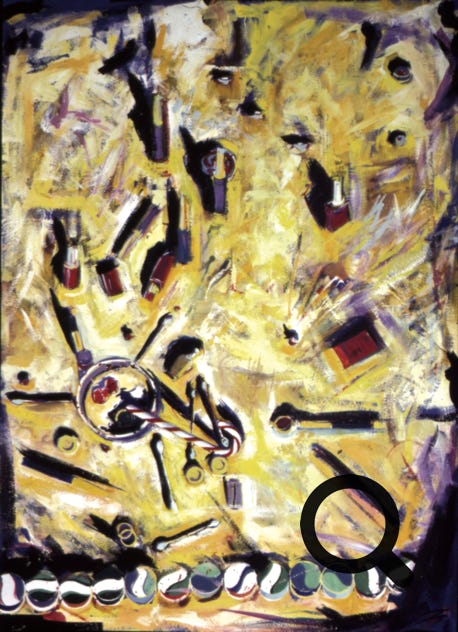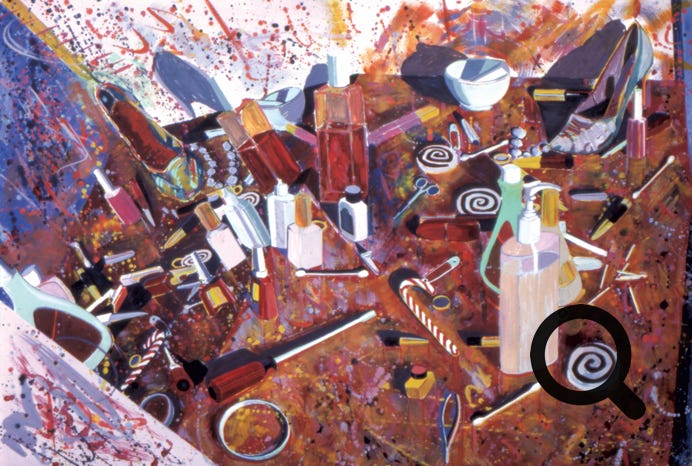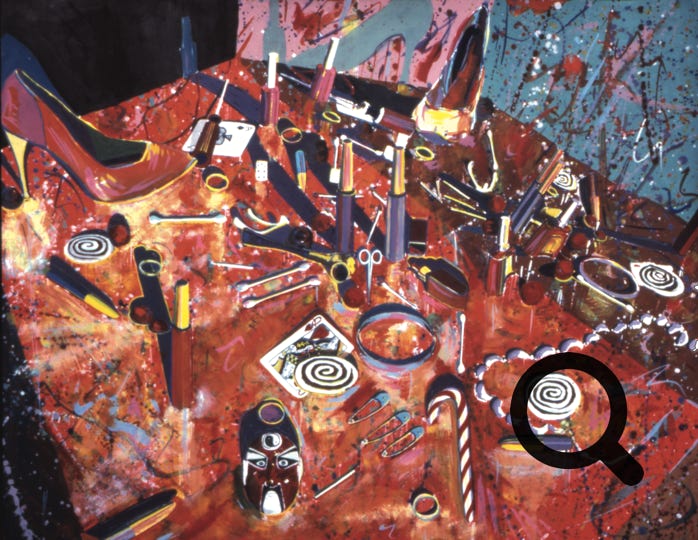As an undergraduate art student at Mount Mary College (Milwaukee), Minneapolis College of Art and Design, and the University of Wisconsin-Milwaukee, Mary Snyder Behrens was primarily interested in drawing and painting.
Beginning in 1986, she shifted her attention to the use of gouache in constructing elaborate, high-density still-life paintings. The results were made more complex by the inclusion of mirrors, the use of objects in multiples, and dramatic diagonal lighting. Vivid color interplay and heightened light-dark contrasts were essential to these works, as was the raw application of paint.
As shown here, the items in the arrangements were everyday objects, such as pinwheel cookies, lipstick tubes, scissors, cotton swabs, and candy canes. These early works anticipate her later practice of “repurposing” otherwise everyday things.
Mary Snyder Behrens, The Ladies Room Ravaged (1983). Mixed media. 28h x 22w.
Mary Snyder Behrens, Ninth Tale of the Fifth Day (1983). Gouache and watercolor. 35h x 25w. Private collection.
• • •
Mary Snyder Behrens, A New Verlaine (1983). Gouache and watercolor. 25h x 35w.
Mary Snyder Behrens, Voices from the Poor Quarter (1983). Gouache and watercolor. 17h x 25w.
Mary Snyder Behrens, Odd John (1983). Collage and mixed media. 28h x 22w.
As her work evolved, it shifted increasingly toward collage. In some cases, surfaces were no longer painted, but were made with glued-on portions of “found” components such as advertising packaging, playing cards, bus passes, and other ephemera. She began to introduce components that were not paint, paper or packaging, but discarded remains of fabric.
